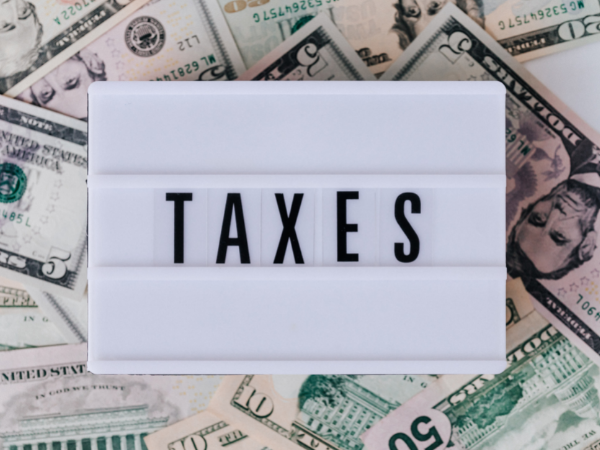Child Tax Credit: Much-needed relief for families
As the United States starts reopening, the Child Tax Credit is a welcome relief. It will provide millions of Americans with much-needed funds to recover after the pandemic. The payments can help them meet necessities until they find employment.
First, let’s talk about the American Rescue Plan and its updated Child Tax Credit. Then, we’ll discuss how this relief program works. We will also see if you should enroll in the program or choose other means instead.
Many people lost their jobs and businesses due to the lockdowns. Now that many states are reopening, they would need to make ends meet. If you’re one of these folks, you should see if the Child Tax Credit is right for you.
An update to the American Rescue Plan
🗓️ Families, mark July 15 on your calendar! That’s when families in our community will start receiving monthly #ChildTaxCredit payments. Illinois parents may be eligible to receive monthly payments of up to $300 per child. Visit https://t.co/8E5d41jQwJ to learn more. pic.twitter.com/aQDLqGUfkG
— Rep. Lauren Underwood (@RepUnderwood) June 28, 2021
President Joe Biden started his term in one of the most trying times in history. The United States was struggling with the spread of COVID-19. That’s why it went on lockdown.
While it helped in reducing cases, it came at the expense of the US economy. Millions are now left with no jobs. Many can’t keep up with the bills piling up. Worse, some lost their homes.
In response, Biden signed the American Rescue Plan. It contained several measures to help the economy. One of its main goals was to provide immediate relief to families.
The Child Tax Credit was one of the programs included in the plan. The program gives families payments for each qualifying child. However, Biden saw that families needed more help.
That’s why he turned into the Advance Child Tax Credit. It increased the credit amounts for this year. Here’s how it works:
- Families get $3,600 for each child below six years of age.
- They get $3,000 for each child ages 6 to 17.
- Parents will be receiving payments every month. This means they get $300 per child under 6 and $250 for ages 6 to 17.
- Back then, low-income families didn’t get Child Tax Credit payments. Now, every family in need gets help.
- The IRS will send half of the 2021 Child Tax Credit on July 15.
- Parents will receive the rest when they file taxes in 2022.
How do I apply for the Child Tax Credit?
You’ll receive an amount depending on your income. Those earning high incomes may receive lower payments or none at all. Here are the people who will get the full Child Tax Credit:
- Married couples are earning less than $150,000.
- Single parents or Heads of Households who make less than $112,500.
- Everyone else who earns less than $75,000.
Meanwhile, those with higher incomes may qualify for at least $2,000 per child. This means the following people will receive $166 monthly for each qualifying child:
- Married couples are earning less than $400,000.
- Single parents who make less than $200,000.
- Everyone else who earns less than $200,000.
Those earning more may receive less or none at all. Married couples filing jointly must meet certain requirements. For detailed information, please check the IRS webpage:
- You should have filed a tax return from 2019 or 2020. Also, it would help if you had claimed a Child Tax Credit from it before.
- It would help if you gave the IRS your info to get an Economic Impact Payment. Also, it would be best if you had used the “Non-Filers: Enter Payment Here” tool.
- Your main home should be in the United States. Alternatively, you should have filed a joint return with a spouse who has a main home in the US.
- It would be best if you had a qualifying child aged below 18 at the end of 2021. What’s more, the child must have a valid Social Security Number.
- Your income should be lower than certain limits.
The IRS will send the payment to your bank account. It will use the info available in its files. If they don’t have your bank account info, they will mail a check to your address.
How do non-filers apply?
The White House also has guidelines for those who didn’t file 2021 taxes. This means they can benefit from the 2021 Child Tax Credit. They must meet the following criteria:
- You must have at least one qualifying child.
- You’re making less than $24,800 as a married couple.
- As a Head of Household, you earn $18,650.
- If you file your taxes as a single filer, you get $12,400.
Use the IRS Non-filer Sign-up Tool if you meet these requirements. Additionally, you will need the following information:
- Social Security Numbers for the children.
- Social Security Numbers or ITIN for you and your spouse.
- Your mailing address.
- An email address.
- If you want to receive the payments via direct deposit, including your bank account information.
If you didn’t include your banking info, the IRS would mail your payment. You may place a trusted address if you don’t have a permanent one.
Those without a bank account may check the Federal Deposit Insurance Corporation (FDIC). Learn how you can open an account online.
Alternatively, you may place your prepaid debit card instead of a bank account. Mobile payment apps are also valid options. They must have an account number and allow routing.
Others may want to opt out.
Starting July 15, people will receive the advance monthly payments. They may claim the remainder when they file their 2021 income tax returns.
For some people, it might be ideal to opt-out of the Child Tax Credit program. See if their reasons apply to you:
- Your actual income exceeds your new CTC income – if you now earn more than your latest tax filings, you might not be eligible.
- Changes to your dependents – If you’re a single parent, your kid’s other parent might be claiming them for the 2021 tax year. You may want to opt-out to let the other parent receive the full Child Tax Credit.
- Your main home was outside of the US – If you didn’t live in the United States for more than half of 2021, you wouldn’t be eligible for CTC.
If you want to unenroll, use the Child Tax Credit Update Portal. You may check your enrollment status. Also, you may update your bank account details.
Alternatives to the Child Tax Credit
You don’t have to rely on the CTC, though. The United States government provides other relief programs like SNAP and PPP. You have do-it-yourself alternatives too:
- Tap into your emergency fund – If you set some money aside, it’s time to use them. Spend as little as possible by only purchasing necessities. Alternatively, shop online so you won’t have to withdraw your funds personally.
- Set a budget – Minimize your expenses by planning how you’ll use your money. You may follow the 50-30-20 rule. What’s more, this will help you increase your emergency savings.
- File unemployment claims – This is especially helpful if you can’t rely on coronavirus relief. Only use the official websites of the federal government.
- Find a side gig – Remote work is more popular nowadays because of the pandemic. It also lets you conveniently earn extra income.
- Sell unused knick-knacks – Check the stuff in your attic. If they’re not important, you might want to sell them online. You may post them on websites like Etsy, Amazon, or the Facebook Marketplace.
- Reduce debts – This will help you reallocate debt payments for better purposes. Consolidation, settlement, and counseling may facilitate this. Also, you may try the DIY snowball and avalanche methods.
Related Articles
Final Thoughts
The Child Tax Credit aims to help the US economy get back on its feet. It supports citizens while they find new employment and reopen businesses.
Despite the gloomy situation, this is a great time for investments. Thankfully, there are numerous ways you can start. Certain smartphone apps let you do it with a few taps!
We’re in the middle of a global recession. Investing lets you protect your purchasing power. Even better, some could provide a steady stream of fixed income!
Learn more about the Child Tax Credit
How do I know if I will get the Child Tax Credit?
Open the Child Tax Credit Update Portal on your web browser. It lets you see your enrollment status and update your bank account information.
Is it better to opt out of Child Tax Credit?
You may choose not to get child tax credits, depending on your situation. For example, a single parent might opt-out, so their child’s other parent gets full payments.
How do I unenroll from the Child Tax Credit program?
The Child Tax Credit Update Portal enables people to unenroll from the program. Please think carefully before joining or exiting the CTC program.
Sponsored Advertising Content:
Advertorial or Sponsorship User published Content does not represent the views of the Company or any individual associated with the Company, and we do not control this Content. In no event shall you represent or suggest, directly or indirectly, the Company's endorsement of user published Content.
The company does not vouch for the accuracy or credibility of any user published Content on our Website and does not take any responsibility or assume any liability for any actions you may take as a result of reading user published Content on our Website.
Through your use of the Website and Services, you may be exposed to Content that you may find offensive, objectionable, harmful, inaccurate, or deceptive.
By using our Website, you assume all associated risks.This Website contains hyperlinks to other websites controlled by third parties. These links are provided solely as a convenience to you and do not imply endorsement by the Company of, or any affiliation with, or endorsement by, the owner of the linked website.
Company is not responsible for the contents or use of any linked website, or any consequence of making the link.
This content is provided by New Start Advantage LLC through a licensed media partnership with Inquirer.net. Inquirer.net does not endorse or verify partner content. All information is for educational purposes only and does not constitute financial advice. Offers and terms may change without notice.





